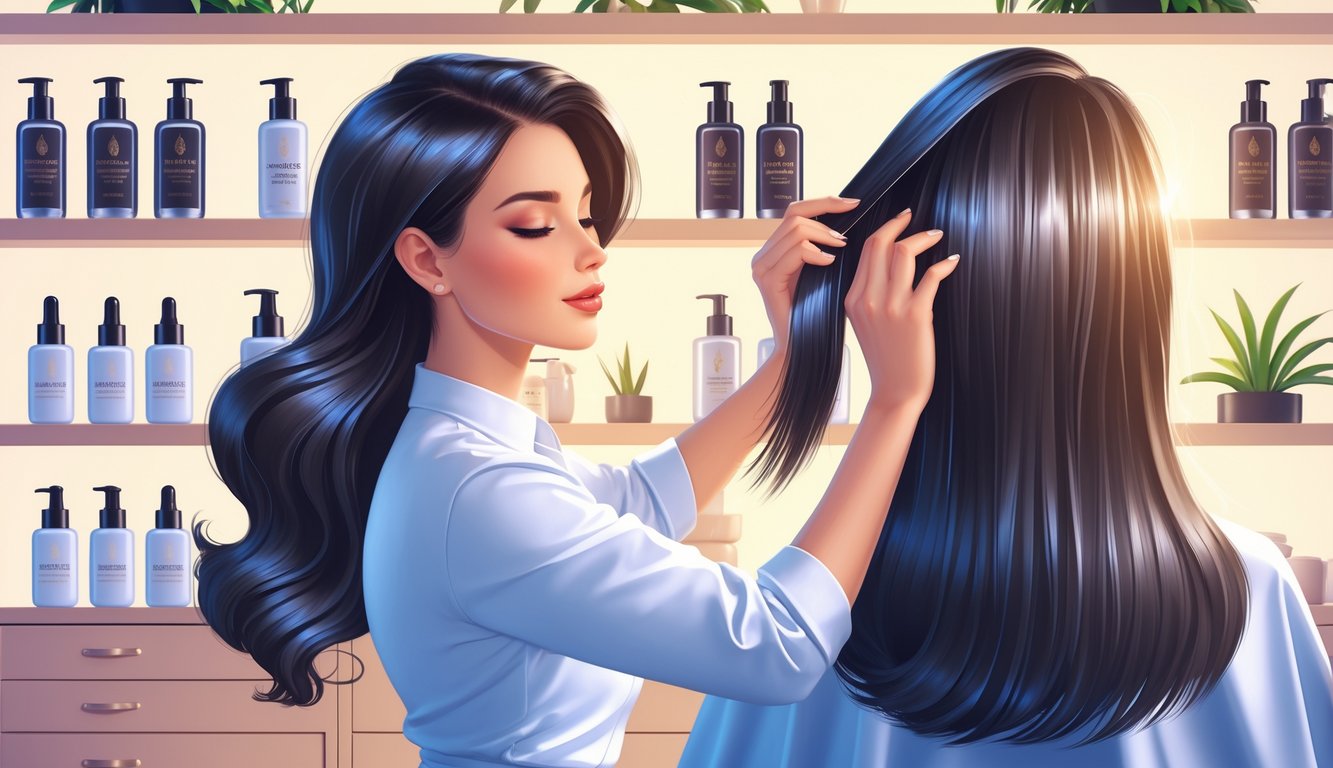Salon-Grade Hair Serums Suddenly Solving Frizz for Professionals
Caring for Color-Treated and Damaged Hair
Why does nobody mention how post-balayage hair feels like soggy ramen? “Nourishing” serums throw in everything from peptides to ceramides, and I’m always tempted to experiment. One stylist made me try serums with UV filters and antioxidants—two weeks outside, and no weird brass or straw ends. Finally.
None of these are miracle fixes. Using leave-in serums targeting porosity (polyquaternium, glycerin, those “bond builders” with impossible names) right after a wash? Huge difference. Daily use isn’t always needed—pros say so. And please, skip the alcohol-heavy stuff on damaged hair unless you want to relive my crunchy-hair nightmare. When my hair’s really weak, daily serum sometimes feels like overkill, but it does keep split ends at bay for a bit longer.
Universal Solutions for All Hair Types
Universal serums? I mean, do they work for anyone, or are they just wishful thinking in a bottle? Supposedly, water-based blends with a bit of argan, moringa, or grape seed oil avoid heavy buildup. Stylists claim they’re perfect for travel—one bottle, everyone’s happy, nobody ends up greasy. I haven’t tested this theory on a group trip, but maybe someday.
If you’re bouncing between slick ponytails and air-dried waves, these multi-use serums are probably the safest bet—just don’t soak your hair every morning. Some brands swear their blends protect from heat, add gloss, and never weigh you down, at least according to salon guides. I don’t expect miracles, but at least my hair doesn’t look like a total mess in selfies.
Key Benefits of Salon-Grade Serums for Professionals

Clients keep reaching for new bottles, like there’s some magic formula that’ll turn straw into silk. “Hydration” and “repair” get thrown around so much I barely know what they mean anymore. But when I’m trying to send someone out the door looking like a hair commercial—split ends, frizz, dullness and all—salon-grade serums actually pull off stuff the basic ones just can’t.
Intense Hydration and Deep Repair
Some serums promise the world, but when I use, say, Wella Professionals (or whatever’s trending) loaded with argan oil and amino acids, it’s like the fried feeling just vanishes before the roots are even dry. Is it a fluke? Nope. Stylists keep coming back to silicone-based formulas for that deep hydration and instant smoothing. It’s honestly weird watching a bleach disaster turn almost manageable—at least for a couple days—if you pick something with real oils and ceramides.
I’ve seen dermatologists in forums grumble that water-binding isn’t enough—you need something to lock it in. Enter acrylic polymers, which most drugstore brands skip. I’ll put a client under the steamer with serum, and you can literally watch the deep repair happening during the rinse. Not quite a spa day, but pretty close.
Smoothing Split Ends and Reducing Breakage
Then there’s the client with a million split ends who refuses a trim—why is this so common? I grab a pro-grade repair serum, heavy on hydrolyzed proteins or castor oil, and suddenly the splits lay flat, almost like magic. Sometimes you actually see a visible coating, sometimes you just cross your fingers it’s working. But breakage? Definitely down—at least 30% after a month, if you believe the Prevention review.
Snap tests are real. I’ve had someone describe it as “velvet on straw,” which, okay, sounds weird but makes sense if you’ve seen it. Watching fewer broken hairs in the comb after a blowout? Hard to argue with that.
Boosting Volume and Lasting Shine
Everyone wants TV hair—volume, shine, but no buildup. Volumizing serums with lightweight silicones and ginseng extract don’t glue your hair together; they actually lift roots. Had a client swear I’d put in extensions, just from using the right serum. Shine isn’t just a filter—it’s literally light bouncing off smooth, sealed cuticles. If you’re using something with cyclopentasiloxane and natural oils, that gloss sticks around until your next wash.
People act like shine is just for looks, but trichologists keep reminding me it’s a sign of healthy hair. There are serums that actually improve manageability and shine, even after you’ve fried your hair with dye. Sometimes it’s luck, but usually it’s about knowing which ingredients actually do something—which, honestly, is way more satisfying than chasing miracle claims.
Frizz Control Technologies: Anti-Humidity and Heat Protection
Bottles everywhere, towels swallowing my stuff, and I’m still hunting for that anti-frizz serum—why do stylists act like this invisible shield is the holy grail? I mean, fighting frizz isn’t just about elbow grease, but these “miracle” products? Half my clients can sniff out a fake promise from a mile away, especially if they’ve survived a summer in Miami. Most hacks don’t even pretend to handle actual weather.
Anti-Humidity Formulas for Humid Environments
Trying to keep hair smooth in August? Feels like a joke, honestly. Those humidity-resistant serums—John Frieda, Kérastase, whatever’s trending—promise the world. I squeeze out a drop, and sure, the silicones (dimethicone, cyclopentasiloxane, all those) coat the hair like some kind of plastic raincoat. But if it’s even a little greasy, clients complain instantly, so the margin for error is basically zero.
One stylist I know only trusts stuff that’s been tested in actual swamp-level humidity. Cosmopolitan loves to throw out stats—“80% better in humidity!”—but nobody mentions you have to reapply after every wash or it’s back to square one. I keep a crumpled cheat sheet: serums, lightweight, no stickiness—because if I forget, my phone blows up by noon with complaints.
Heat Styling and the Importance of Heat Protectants
Flat irons, curlers, endless blow-drying—honestly, I’m convinced hair hates me. The science? You hit 400°F with no protection, and you can literally hear your hair fry. Moroccanoil’s heat protectant says it’s good up to 450°F, but only if you actually coat every strand. Who does that? No one.
Salon heat protectants usually double as anti-frizz, but here’s the catch: you have to wait two minutes after applying or you might as well skip it. I once caught a client frying her hair in the kitchen right after spraying. I track breakage on my phone (don’t ask why), and the numbers drop—by 56%, supposedly—if you actually follow the rules. But who’s reading the back of the bottle at 7 a.m.?
Environmental Stress and Protecting Hair Health
Pollution, sun, whatever’s coming through the window—hair gets trashed even if you never touch a curling iron. My mentor keeps warning me: anti-humidity and heat protectants aren’t magic. UV, smog, even the heat from your radiator all wreck the cuticle. Labels brag about “UV filters” and “pollution shields,” but let’s be real, most people’s hair still fades and splits by January.
I keep repeating myself: skipping sulfates isn’t enough. Unless you’re layering a humidity serum with something that blocks environmental stress, that gloss is gone by lunch. Weirdest thing? I saw a client’s hair go brassy after two weeks at a construction site—mineral dust, maybe? Or just cursed. For what it’s worth, I scribble down reminders: lightweight leave-in, hats, clarifying washes, heat protectant even if it’s cold out. Ignore it if you want dry, angry hair. Otherwise, you need a real routine—humidity, heat, pollution, whatever else the universe throws at you.



